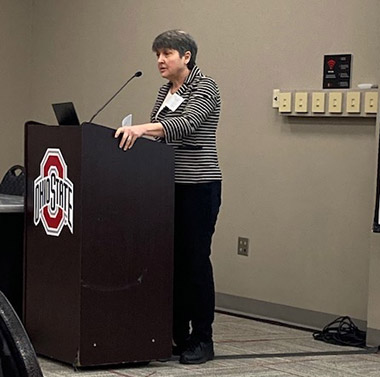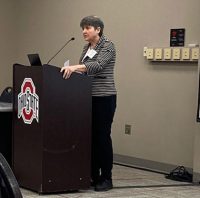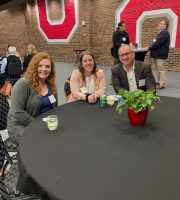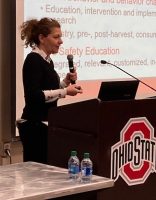A two-year study on Listeria monocytogenes (Lm) contamination patterns and related sanitation programs in produce processing facilities is already uncovering valuable insights. Ana Allende, Ph.D., and her team from the CEBAS-CSIC research institute in Spain, are hoping that their research, funded by the Center for Produce Safety, will yield practical data about produce facilities’ environmental monitoring plans as well as the efficacy of sanitation programs.
The researchers worked with three processing plants: one with a cut iceberg lettuce line, one with a cut fruit line, and one with a salad bowl line. Their first objective was to understand how different factors such as zoning, sanitary design, and connectivity affected the probability of contamination in different fresh produce processing facilities. In the case of salad bowls, the ingredients included not only leafy greens and other vegetables but also proteins from meat, fish and cheese, or pastas from different sources.
The researchers divided the processing areas into three zones based on their proximity to contact with the produce. Zone 1 involved areas with direct contact, such as knives and conveyor belts. Zone 2 included surfaces that did not contact food but were in close proximity, and zone 3 included more remote non-contact surfaces, such as drains, floors, and ceilings that could potentially lead to contaminating zones 1 and 2.
They conducted systematic sampling of the facilities at the end of the day before cleaning and sanitizing. They also resampled the three processing lines after the cleaning and disinfection activities. In addition to the more than 600 total samples from the three zones, the researchers collected 45 samples from raw ingredients and end products.
“By sampling the processing plants before and after cleaning and disinfection, we could understand which might be the entry points of the contamination,” said Allende.
Regardless of the facility, they had the highest number of positive Lm samples from zone 3. “One of the hypotheses we had was the raw material was introducing much of the Listeria,” said Allende. “This was before we did sampling and the whole genome sequencing to understand the isolates and that they were not all coming from the raw material. Some of the contamination was probably coming from zone 3 in the different processing facilities.”
The researchers also conducted whole genome sequencing on 100 samples to better understand whether the Lm was transient or persistent. What surprised them was that the same two serotypes of L. monocytogenes were found on the three processing lines after the two samplings, before and after cleaning. “This makes us understand that these serotypes are inherent and are moving from zone 3 to zone 1,” said Allende.
As part of the project, the researchers also evaluated the efficacy of biocides against resident Lm isolates. “We found, indeed, all of the isolates obtained from the environment after cleaning were sensitive to the biocides,” said Allende. This allayed concerns that the pathogens were becoming resistant to the sanitizers.
While the research aimed to provide relevant results for the three cooperating produce processors, it also has broader implications for the produce industry about how they should conduct environmental monitoring including sampling after processing just before cleaning. In addition, it should help processors better understand the main contamination points in zone 1 and how they relate to identical or similar Lm sequence types in zones 2 and 3.
































